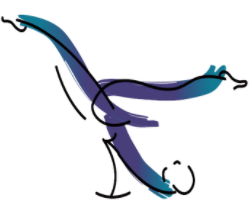Pilates for Athletes: Enhancing Performance and Preventing Injuries
When you think of athletes working out, you usually picture sprints or lifting weights in a gym, not exactly a quiet studio performance on mats. However, Pilates is a low-key workout that is often tied closer to the dancer’s domain, and it is quite revolutionary in helping athletes stretch, recover, and stay in shape.
Yes, it might not be about building endurance or muscle, but more about boosting balance and promoting flexibility.
So, the answer is yes, many professional athletes do Pilates just to stay in shape. After all, being on top of the game means that you should improve every part of your body, not just building muscle, right?
Therefore, Pilates can help you boost your performance and lower the risk of injury, which is very important when we are talking about professional athletes.
Let’s see how Pilates helps athletes build a better body.
The Core of It All
So, what is Pilates all about? Well, it’s certainly not about bulking up, but more about control, specifically your core control. Every move here hinges on engaging those deep abdominal and back muscles, which are often abandoned when you work out. These muscles help you stabilize your spine, which can also improve posture, and you’ll get a lower risk for injury.
For professional athletes, this is the most important thing. Having a rock-solid foundation (core) doesn’t only mean a six-pack. This is where most of the power comes from, so if you want to become stronger, try waking up your core (abdominal) muscles with Pilates.
Think about jockeys all squatted down in a horse race, where, without core strength, they wouldn’t be able to maintain the same posture during the race. And if you are a fan of horse racing, you’d know that a jockey who’s unfit won’t get a chance to win the race.
If you are new to horse racing, you probably wonder how odds work in horse racing? Well, there is a reason why handicappers also see the jockey’s pace and form when analyzing the odds in horse racing. If they don’t have a good pace or form in previous races, there is a good chance that they won’t do well in an upcoming race.
Flexibility Meets Strength
Muscle strength and endurance aren’t the only things required for you to become a professional athlete. There is also something called flexibility. Pushing too hard without stretching and you are begging for a pull or a muscle tear.
This is where Pilates comes in handy. This is an activity that blends strength with flexibility, stretching you out while keeping you stable.
Let’s take the “swan” exercise for example. This is a Pilates exercise that is commonly done by many professional athletes, including jockeys. It is an exercise that opens your chest and lengthens your spine, which counters the hunch that creeps in from hours of training. Then we have something called “leg circles”, which can loosen up your hip flexors and strengthen your lower back.
All of these things might sound small, but they are key to becoming the best version of yourself.
Injury Prevention
Here’s where Pilates really shines keeping you off the sidelines. Sports are brutal—repetitive motions, sudden twists, and sheer impact wear you down. Weak spots like unstable knees or overworked shoulders turn into ticking time bombs. Pilates zeroes in on those vulnerabilities, building the small, stabilizing muscles that big lifts often miss.
Take a runner with tight hamstrings or a basketball player prone to ankle rolls. Exercises like the “side kick” or “single leg stretch” strengthen the joints and improve balance, cutting the risk of a tweak.
Recovery That Actually Works
Training hard is only half the battle—recovering smart is the rest. Pilates isn’t about maxing out; it’s low-impact, so it doubles as active recovery. After a grueling match or race, a session can flush out stiffness and get blood flowing without taxing sore muscles. The controlled breathing—deep, rhythmic inhales and exhales—also calms your nervous system, cutting stress that slows healing.
Athletes like jockeys, who might race multiple times in a day, can use Pilates to reset between rides. A quick reformer workout stretches out the kinks and keeps them limber, so they’re not hobbling into the next gate. It’s not downtime—it’s strategic upkeep.
Making It Fit Your Game
The beauty of Pilates is its flexibility. You can tailor it to your sport’s demands. A golfer might focus on rotational moves to amp their swing, while a cyclist could target quads and glutes for pedal power.
Jockeys might lean into exercises like the “mermaid” to ease side-to-side tension from leaning into turns. Whether you’re on a mat or a machine, a good instructor can tweak the routine to match your goals.
You don’t need a fancy studio either. Plenty of athletes start with bodyweight moves at home—think “roll-ups” or “bird-dogs”—and still see results. It’s less about gear and more about consistency. Even 20 minutes a few times a week can shift how you move and feel.
So, if you are a professional athlete and the only thing you are doing is lifting weights or running, try Pilates. You’ll be able to unlock your untapped potential.


